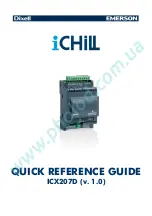
19
Section 3 E6000 Emulator Functions
3.1 Debugging
Features
3.1.1 Breakpoints
The emulator provides a comprehensive range of alternative types of breakpoints, to give you the maximum
flexibility in debugging applications and user system.
Hardware Break Conditions:
Up to 12 break conditions can be defined using the event and range channels in
the complex event system (CES). For more information about the hardware break conditions, see section 3.2,
Complex Event System (CES).
Software Breakpoints:
Up to 256 software breakpoints can be defined. These software breakpoints are set by
replacing the user instruction by a BREAK instruction. In target ROM, only one breakpoint (on-chip break) can
be set.
3.1.2 Trace
The emulator incorporates a powerful realtime trace facility which allows you to examine MCU activity in detail.
The realtime trace buffer holds up to 32768 bus cycles, and it is continuously updated during execution. The
buffer is configured as a rolling buffer, which can be stopped during execution and read back by the host
computer without halting emulation.
The data stored in the trace buffer is displayed in both source program and assembly languages for ease of
debugging. However, if trace filtering is used, only assembly language can be displayed.
The buffer can be set up to store all bus cycles or just selected cycles. This is called trace acquisition and uses the
complex event system (CES) to select the parts of the program you are interested in.
It is also possible to store all bus cycles and then just look at selected cycles. This is called trace filtering.
3.1.3
Execution Time Measurements
The emulator allows you to measure the total execution time, or to measure the time of execution between
specified events in the complex event system. You can set the resolution of the timer to any of the following
values:
20 ns, 125 ns, 250 ns, 500 ns, 1 µs, 2 µs, 4 µs, 8 µs, or 16 µs.
At 20 ns the maximum time that can be measured is about six hours, and at 16µs the maximum time is about 200
days.
3.1.4 Performance
Analysis
The emulator provides functions for measuring the performance of a program. The performance of the specified
program range can be displayed either as a histogram or in percentage form. A timer resolution of 20 ns, 40 ns,
or 160 ns can be selected. In addition, the execution count of the specified program range can be measured (1 to
65535).
Summary of Contents for H8 Series
Page 4: ......
Page 6: ......
Page 20: ...viii...
Page 21: ...Emulator Debugger Part...
Page 22: ......
Page 26: ...4...
Page 40: ...18...
Page 46: ...24...
Page 148: ...126 Figure 6 8 Editor Window Break Status...
Page 202: ...180...
Page 250: ...228...
Page 262: ...240...
Page 271: ......
















































